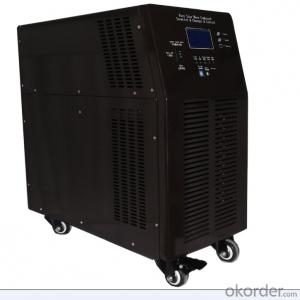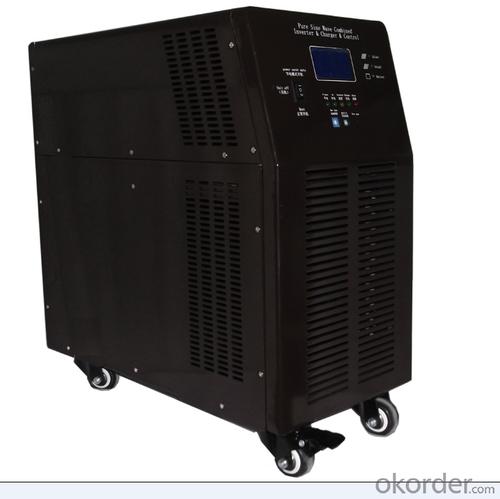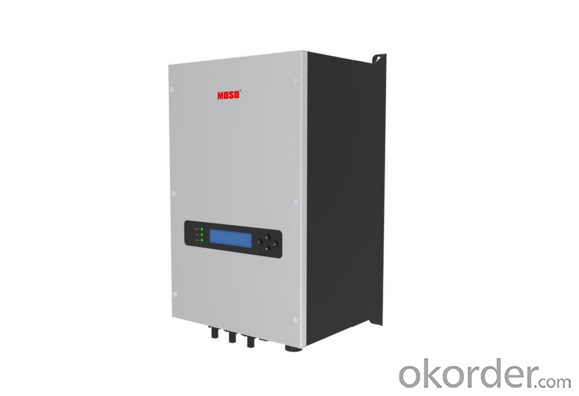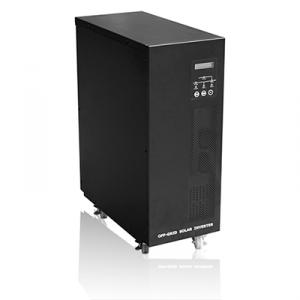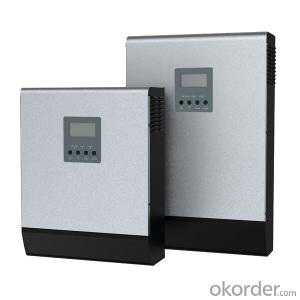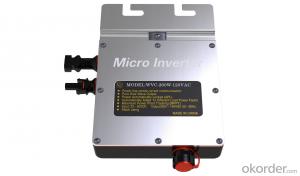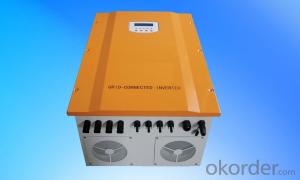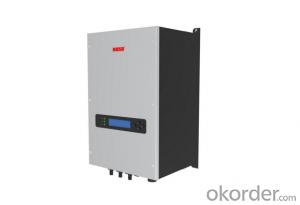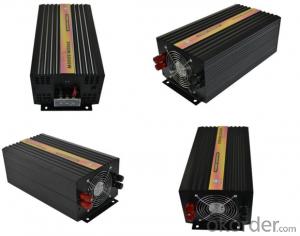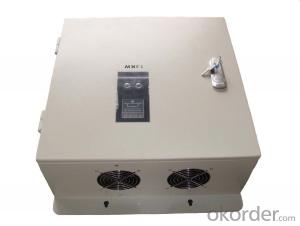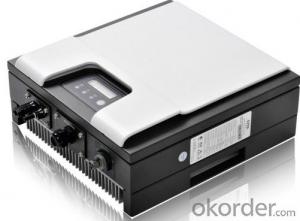Single Phase Inverter Second Generation 1.5k Solar Inverter made in China
- Loading Port:
- Shanghai
- Payment Terms:
- TT OR LC
- Min Order Qty:
- 0 watt
- Supply Capability:
- 10000 watt/month
OKorder Service Pledge
OKorder Financial Service
You Might Also Like
Description of Single Phase Inverter Second Generation 1.5k Solar Inverter
Solar ac power system consists of solar panels, charge controllers, inverter and battery; Solar energy does not include inverter dc power system. Inverter is a kind of power conversion device, inverter by incentives can be divided into self-excited oscillation inverter and separately excited oscillation inverter.
Features of Single Phase Inverter Second Generation 1.5k Solar Inverter
Standard 10 years warranty, 5-15 years optional
Built-in Gprs as option
Built-in Wifi as option
Smaller and lighter, only 9.6kg
High performance DSP for algorithm control
VDE-AR-N 4105 certification
New topology design
Dual MPPT design
Multi-button touch interface
LCD screen visible at night
Have anti-shading function
Advantages of Single Phase Inverter Second Generation 1.5k Solar Inverter
Longer life cycle
Plug and play
Free monitoring through our webportal
Very lower internal temperature
Easy transportation and installation
Faster CPU speed
Adjustable active and reactive power
Maximum conversion effciency up to 97.7%,Euro up to 96.9%
Real-time data readable at night
User friendly operation
Technical Data of Single Phase Inverter Second Generation 1.5k Solar Inverter
| Type | Omniksol-1.5k-TL2 |
| Input(DC) | |
| Max.PV Power | 1750W |
| Max,DC Voltage | 500V |
| Nominal DC Voltage | 360V |
| Operating MPPT Voltage Range | 120-450V |
| MPPT Voltage Range at Nominal Power | 150-450V |
| Start up DC Voltage | 150V |
| Turn off DC Voltage | 120V |
| Max, DC Current | 18A |
| Max, Short Cicuit Current for each MPPT | 20A |
| Number of MPP trackers | 1 |
| Number of DC Connection for each MPPT | 1 |
| DC Connection Type | MC4 connector |
| Output(AC) | |
| Max,AC Apparent Power | 1650VA |
| Nominal AC Power (cos phi = 1) | 1500W |
| Nominal Grid Voltage | 220V/230V/240V |
| Nominal Grid Frequency | 50Hz/60Hz |
| Max, AC Current | 9.0A |
| Grid Voltage Range** | 185-276V |
| Grid Frequency Range** | 45-55Hz/55-65Hz |
| Power Factor | 0.9 capacitive... 0.9 inductive |
| Total Harmonic Distortion(THD) | <2% |
| Feed in Starting Power | 30W |
| Night time Power Consumption | <1W |
| Standby Consumption | 6W |
| AC Connection Type | Plug-in connertor |
| Efficiency | |
| Max,Efficiency | 97.7% |
| Euro Efficiency | 96.8% |
| MPPT Efficiency | 99.9% |
| Safety and Protection | |
| DC Insulation Monitoring | Yes |
| DC Switch | Optional |
| Residual Current Monitoring Unit (RCMU) | Integrated |
| Grid Monitoring with Anti-islanding | Yes |
| Electricity Fuse Protection | Yes |
| Protection Class | Ⅰ(According to IEC 62103) |
| Overvoltage Category | PVⅡ/Mains Ⅲ(According to IEC 62109-1) |
| Reference Standard | |
| Safety Standard | EN 62109, AS/NZS 3100 |
| EMC Standard | EN 6100-6-1, EN 6100-6-2, EN 6100-6-3 EN 6100-6-4, EN 6100-3-2, EN 6100-3-3 |
| Grid Standard | VDE-AR-N4105. VDE-0126-1-1,G83/1,EN 50438,RD1699,CEI 0-21, AS4777,C10/C11 |
| Physical Structure | |
| Dimensions | 343x281x150mm |
| Weight | 9.6kg |
| Environmental Protection Rating | IP 65 (According to IEC 60529) |
| Cooling Concept | Natural convection |
| Mounting Information | Wall bracket |
| General Data | |
| Operating Temperature Range | -25℃ to +60℃(derating above 45℃) |
| Relative Humidity | 0% to 98%, no condensation |
| Max. Altitude (above sea level) | 2000m |
| Noise Type | <40dB |
| Isolation Type | Transformerless |
| Display | 3 LED ,Backlight, 4x20 Character LCD |
| Data Communication | RS485(WiFi, GRPS integrated) |
| Computer Communication | USB |
| Standard Warranty | 10 Years (5-15 years optional) |
IMages of Single Phase Inverter Second Generation 1.5k Solar Inverter
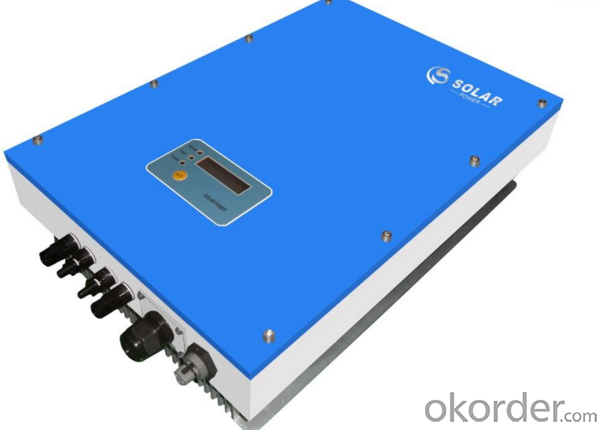
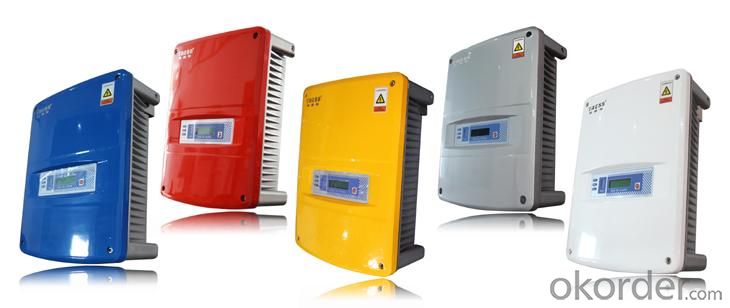
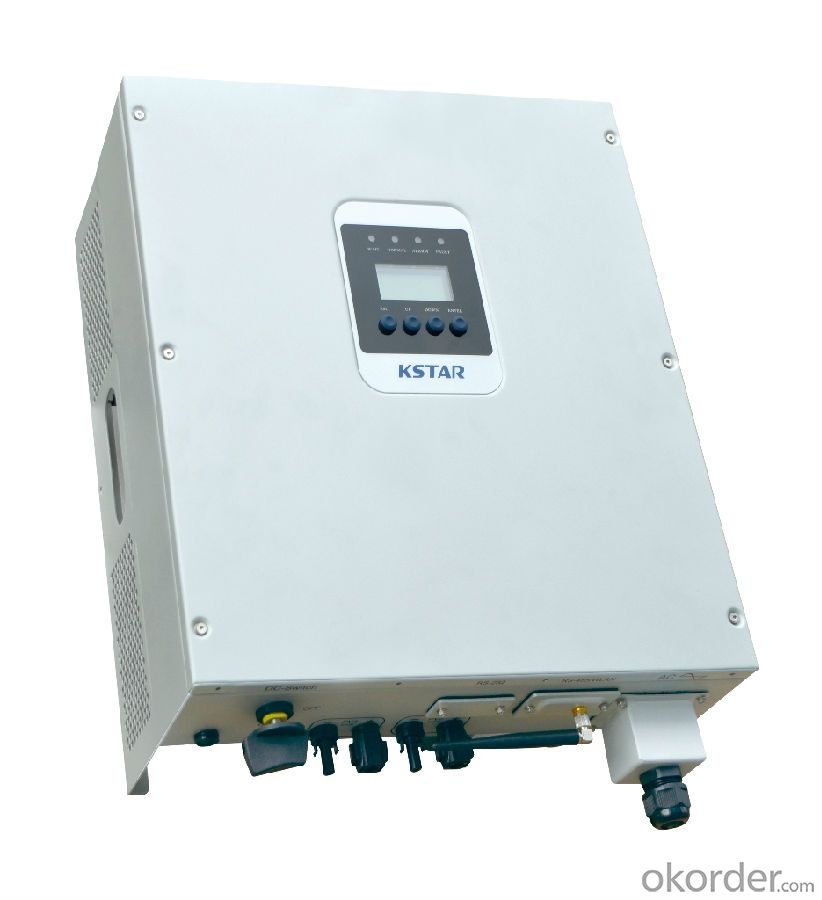
FAQ
Q: Do you have the CE, TUV, UL Certification?
A: We’ve already passed all the tests, and any certificate is available.
Q: Have you ever sold your products to companies in my country?
A: Of course, we have customers in all general PV markets, but I think we should expand our market share along with the market growth.
Q: When did your company set up? You are a new company, how can I believe your quality?
A: We entered into Solar PV industry in 2005, now we have several plants in manufacturing of a-Si and c-Si panels, and our capacity is 220MW per year. Till now we have already passed all the tests by authorized laboratories, e.g. TUV, CE, UL.
Q: Can you help us install the module if we cooperate with you?
A: We haven’t entered into installation sector, but we have the plan in near future.
Q: How do you pack your products?
A: We have rich experience on how to pack the panels to make sure the safety on shipment when it arrives at the destination.
Q: Can you do OEM for us?
A: Yes, we can.
Q: Can we visit your factory?
A: Surely, I will arrange the trip basing on your business schedule.
- Q: What is the purpose of a solar inverter?
- The purpose of a solar inverter is to convert the direct current (DC) electricity produced by solar panels into alternating current (AC) electricity that can be used to power household appliances and be fed back into the electrical grid.
- Q: What is the role of a maximum power point tracker (MPPT) in a solar inverter?
- The role of a maximum power point tracker (MPPT) in a solar inverter is to optimize the efficiency and power output of a solar panel system. Solar panels generate direct current (DC) electricity, but most appliances and the electrical grid operate on alternating current (AC). The MPPT is responsible for continuously adjusting the operating conditions of the solar panels to extract the maximum power available from the sunlight. It tracks the maximum power point (MPP) at which the solar panels can generate the most electricity efficiently. This is important because the output of a solar panel is highly dependent on factors such as temperature, shading, and the angle of the sun. By continuously monitoring and adjusting the voltage and current of the solar panel system, the MPPT ensures that the solar panels are always operating at the MPP, maximizing the power output. It achieves this by dynamically changing the electrical load on the solar panels to find the optimal operating point. The MPPT also acts as a converter, transforming the DC power generated by the solar panels into the AC power required for use by appliances or for feeding back into the electrical grid. This conversion process involves transforming the voltage and frequency of the electricity to match the requirements of the appliances or the grid. Overall, the role of a maximum power point tracker in a solar inverter is to optimize the efficiency and power output of the solar panel system, ensuring that the maximum amount of energy is harnessed from the sunlight and effectively utilized for various applications.
- Q: How does a solar inverter handle voltage fluctuation during cloud cover?
- A solar inverter handles voltage fluctuation during cloud cover by continuously monitoring the incoming solar energy and adjusting its power output accordingly. When the sunlight reduces due to cloud cover, the inverter senses the drop in voltage and adapts by reducing its power output to match the available solar energy. This ensures that the voltage remains stable and the system operates efficiently even in varying weather conditions.
- Q: Can a solar inverter be used with different types of grid connection standards?
- Yes, a solar inverter can be used with different types of grid connection standards. Solar inverters are designed to convert the direct current (DC) produced by solar panels into alternating current (AC) that is compatible with the electrical grid. They are versatile and can be programmed to work with various grid connection standards, such as single-phase or three-phase systems, different voltage levels, and frequency requirements. This allows solar inverters to be used in a wide range of grid configurations, making them adaptable to different regions and grid infrastructure.
- Q: Can a solar inverter be used in regions with extreme weather conditions?
- Yes, solar inverters can be used in regions with extreme weather conditions. However, it is important to choose an inverter that is specifically designed and rated for such conditions. Inverters with high-quality components and robust construction can withstand extreme temperatures, humidity, and other weather-related challenges. Additionally, proper installation and maintenance practices are crucial to ensure the longevity and optimal performance of the inverter in extreme weather conditions.
- Q: What is the maximum number of parallel inverters that can be installed in a solar system?
- The maximum number of parallel inverters that can be installed in a solar system depends on various factors such as the capacity of the system, voltage limitations, and the specific requirements of the inverters being used. However, in general, there is no hard limit on the number of parallel inverters that can be installed as long as they are properly designed, coordinated, and meet the system's electrical specifications and safety standards.
- Q: How does a solar inverter handle voltage fluctuations in the grid?
- A solar inverter handles voltage fluctuations in the grid by continuously monitoring the grid voltage. When the voltage exceeds or drops below the acceptable range, the inverter adjusts the power output of the solar panels accordingly. It stabilizes the voltage by regulating the flow of electricity from the solar panels, ensuring a consistent and safe supply of power to the grid.
- Q: What is the role of an anti-islanding feature in a solar inverter?
- The role of an anti-islanding feature in a solar inverter is to ensure the safety of utility workers and prevent damage to the electrical grid. It detects when there is a power outage or grid disturbance and immediately shuts off the solar inverter to prevent it from continuing to generate electricity. This feature is crucial as it prevents the solar system from operating independently and feeding power back into the grid, which can be dangerous for utility workers trying to repair the power outage.
- Q: What is the role of a solar inverter in voltage control?
- The role of a solar inverter in voltage control is to convert the direct current (DC) generated by solar panels into alternating current (AC) that is suitable for use in the electrical grid. It also ensures that the voltage output from the solar panels matches the voltage requirements of the grid, thereby maintaining a stable and consistent voltage level. This helps prevent voltage fluctuations and ensures efficient power transmission and distribution.
- Q: Can a solar inverter be used for both grid-tied and off-grid systems?
- Yes, a solar inverter can be used for both grid-tied and off-grid systems. However, it is important to note that there are different types of solar inverters designed specifically for each system. Grid-tied inverters are designed to convert DC power generated by solar panels into AC power and feed it into the grid, while off-grid inverters are designed to convert DC power into AC power for use in standalone systems not connected to the grid.
Send your message to us
Single Phase Inverter Second Generation 1.5k Solar Inverter made in China
- Loading Port:
- Shanghai
- Payment Terms:
- TT OR LC
- Min Order Qty:
- 0 watt
- Supply Capability:
- 10000 watt/month
OKorder Service Pledge
OKorder Financial Service
Similar products
Hot products
Hot Searches
Related keywords
